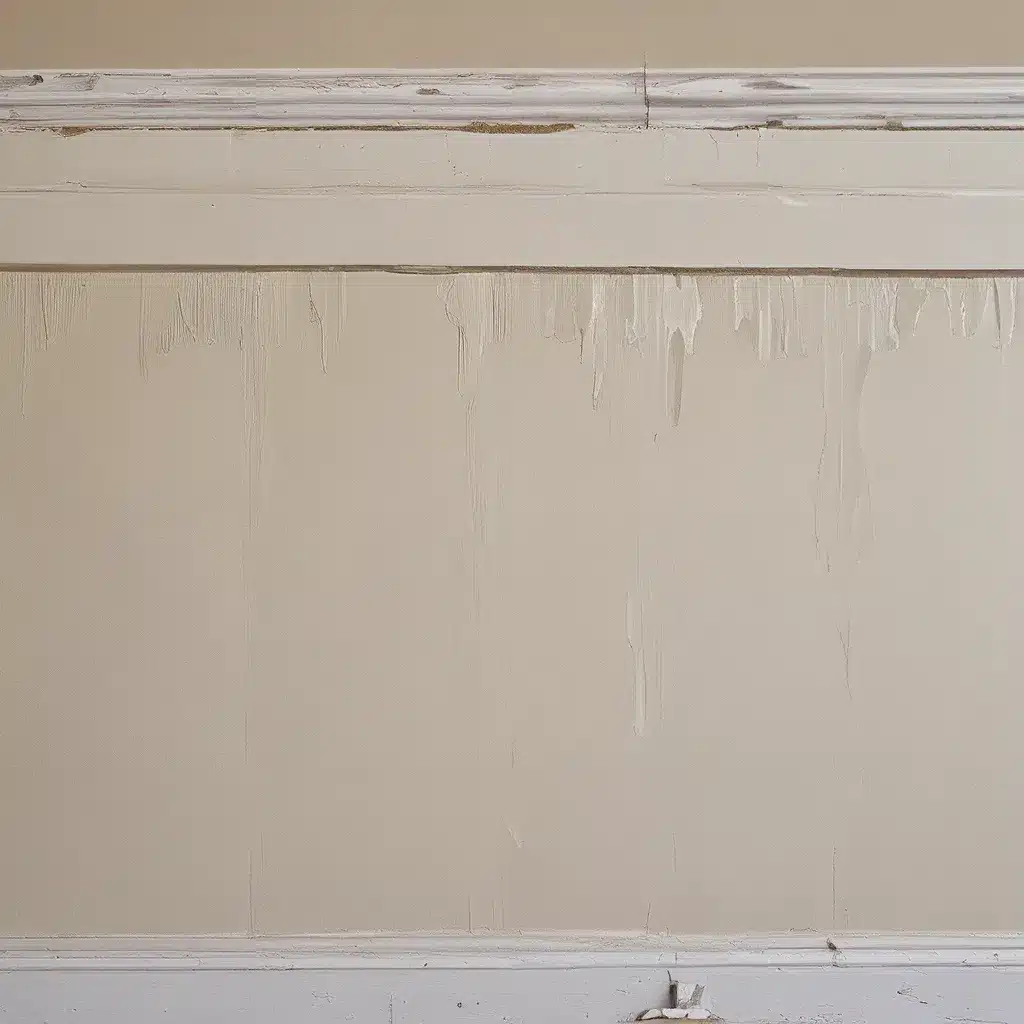The Risky Reality of Lead Paint Removal
As a homeowner, dealing with the hazards of lead paint can be a daunting prospect. I know the feeling all too well – the anxiety of potentially exposing myself and my family to this toxic substance, the frustration of not knowing where to even begin. But here’s the thing: lead paint removal doesn’t have to be a nightmare. With the right approach and the proper precautions, you can safely tackle this project and reclaim your home.
Let me share my own experience with you. I have a 100-year-old house, and the exterior window sills were in rough shape – the paint was flaking and peeling, and the old glazing was coming off too. Like any ambitious DIYer, I dove right in, scraping and sanding away without a second thought. It wasn’t until I started noticing those telltale dark layers underneath that I realized I might have a bigger problem on my hands.
Sure enough, a quick lead test confirmed the presence of the dreaded lead paint. My heart sank as I imagined the potential health risks and the astronomical cost of professional abatement. But then I started doing some research, and that’s when I discovered a game-changing solution: LEAD-OUT Paint Stripper.
Tackling Lead Paint the Smart Way
This eco-friendly, soy-based paint stripper not only removes lead paint safely, but it also renders the waste non-hazardous for disposal. No more worrying about lead dust or costly hazardous waste disposal – LEAD-OUT takes care of it all.
One of the most impressive things about LEAD-OUT is its Molecular Bonding System (MBS). This innovative technology reacts with the lead at a molecular level, permanently altering the compound to make it harmless. It’s like turning lead into something totally benign – no more dangerous particles floating around to wreak havoc on your health.
Adam Cleaning has used LEAD-OUT with great success, and they’ve shared some pretty compelling testimonials. One customer, Jill Carrier from Massachusetts, raved, “I liked that I could remove the lead paint safely and that there was very little paint dust created. The bare wood was exposed with one application and it was not damaged. I’ve recommended LEAD-OUT to many people.”
Another user, Michael Macalle from New Jersey, noted, “LEAD-OUT reduces hazardous lead levels from 401 mg/L to zero and costs less than competing lead paint removers. Also, LEAD-OUT is the only paint stripper to render all heavy metals permanently non-hazardous.”
A Step-by-Step Guide to Safe Lead Paint Removal
Okay, so we know LEAD-OUT is a game-changer, but how exactly do you use it? Here’s a quick step-by-step guide:
-
Suit Up: Gear up with a paint respirator, goggles, and disposable coveralls. Safety first, my friends!
-
Wet It Down: Lightly mist the flaking and deteriorating paint with water. This helps prevent lead dust from becoming airborne.
-
Apply LEAD-OUT: Brush or roll on the LEAD-OUT paint stripper, following the instructions carefully. The soy-based formula will start to lift the paint right off.
-
Scrape and Collect: Gently scrape away the loosened paint, using an old vacuum (that you’ll later discard) to suck up the dust and chips as you go. No need for an expensive HEPA vac here.
-
Dispose Properly: Once you’re done, test the waste to ensure it’s non-hazardous, then dispose of it according to local regulations. No more worrying about lead-contaminated waste!
The best part? LEAD-OUT is safe enough for residential use, so you don’t have to worry about all the EPA regulations that contractors have to deal with. As long as you follow some basic lead-safe work practices, you’re good to go.
A Safer, Smarter Way Forward
I know lead paint removal can feel like a daunting task, but with the right tools and a little know-how, it doesn’t have to be. LEAD-OUT has genuinely changed the game, making it possible for DIYers like me to tackle this project safely and cost-effectively.
So, what are you waiting for? Suit up, grab your LEAD-OUT, and let’s get to work reclaiming your home, one window sill at a time. Trust me, the peace of mind you’ll gain is worth it. Happy (and safe) painting!







